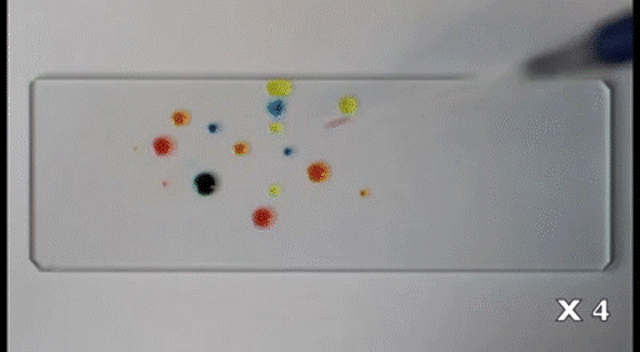When water hits a glass surface, it usually just spreads itself out. But when water containing the organic molecule propylene glycol (PG) hits glass, it comes alive. In a manner of speaking.
Scientists at Stanford University were at first perplexed by the strange behaviour they observed when droplets of food colouring consisting of PG and water were placed on glass. When two droplets of the same PG concentration are placed near one another, they coalesce. However, when droplets of differing concentrations are neighbours, they get close but never join. Sometimes they even chase one each other. What’s happening?!
To find out, the researchers placed tiny tracer beads within droplets. The liquid inside the droplets, they discovered, was flowing in an organised manner, which could be explained by the evaporation of water — the more volatile of the two liquids. As each droplet evaporates, it produces a tiny sphere of humidity. This humidity bubble can, in turn, disrupt the evaporative process of neighbouring bubbles, causing them to attract and dance about one another.
According to Ars Technica:
When two droplets are nearby, they may lie within the humidity gradient of one another, allowing them to influence each other’s behaviour. Because the evaporation rate of water decreases when placed in a humid environment, lying in the humidity gradient of another droplet disrupts the symmetry of the evaporative process. As a result, the droplets end up moving toward one another.
In the case of droplets “chasing” one another, the scientists demonstrated that, upon collision, they exchanged liquid, resulting in a difference in surface tension of the two droplets. They think that this difference in surface tension is what actually causes the droplet with lower surface tension to follow the droplet with a higher surface tension, which then moves away.
Seriously, why weren’t we all doing this in chemistry class? [Ars Technica]
Read the open access scientific paper at Nature.
